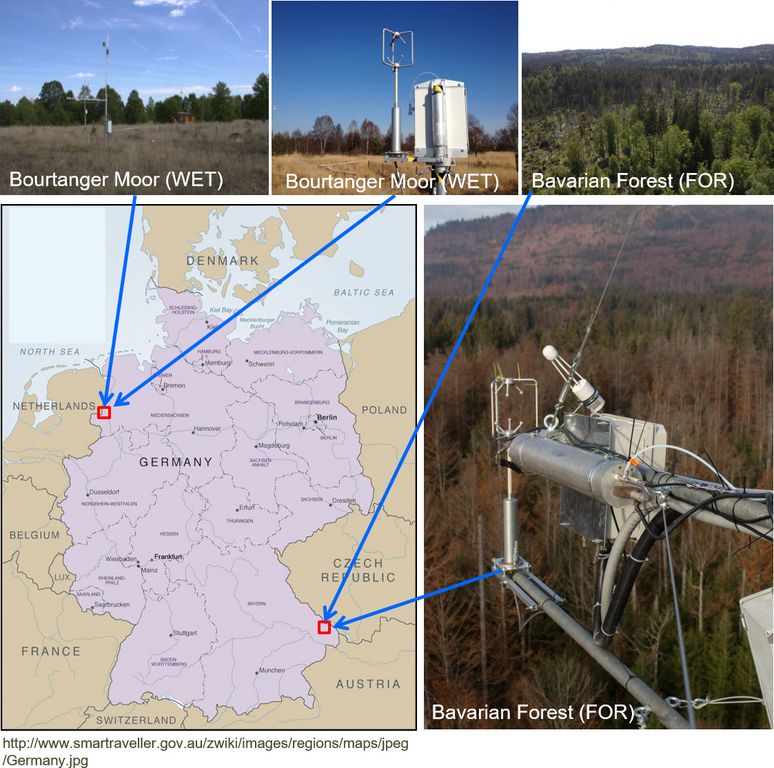Over the past few years our group has conducted a number of field campaigns for investigating the biosphere-atmosphere exchange of reactive nitrogen compounds. The measurements were part of the NITROSPHERE and FORESTFLUX projects.
A description of the datasets and an overview of methodology and data processing routines is given in the attached article. All data have been assigned with a DOI and are publicly available under https://doi.org/10.5281/zenodo.4513854
Main aim of the campaigns was the establishment of eddy flux measurements of ammonia and "Total_Nr". The latter is the sum of all reactive nitrogen compounds except for N2 and N2O. Ammonia was measured using laser spectroscopy (QCL), Total_Nr with the TRANC converter.
In contrast to non-reactive greenhouse gases such as CO2, CH4 and N2O, the measurement of substances like ammonia, nitrogen oxides, nitric acid and particulate ammonium nitrate is much more complicated due to their high reactivity. In the past, active (denuder) and passive samplers or filter packs were the only adequate method to measure mixing ratios in ambient air. Through advances in laser spectroscopy, coupled with further developments and specific adjustments (e.g. short, heated inlets, particle removal, etc.), valuable data sets on the exchange patterns of nitrogen over natural (here Bavarian Forest) and semi-natural ecosystems (Bourtanger Moor) could be recorded. Due to the continuity and high temporal resolution, new insights into daily dynamics, the net N balance and the main controlling factors could be found.
The new datasets are useful for modeling atmospheric deposition, particularly for calibrating model parameter sets. They offer an opportunity for cross-validating data products from UBA (Umweltbundesamt --> German Environment Agency) when the EC methodology (flux calculation, correction procedures, gap-filling) is carefully applied.
https://essd.copernicus.org/articles/14/743/2022/
Data sets: https://doi.org/10.5281/zenodo.4513854

![[Translate to English:] [Translate to English:]](/media/_processed_/6/4/csm_titel_CO2Kampagne8_afeea2273e.png)
![[Translate to English:] [Translate to English:]](/media/_processed_/4/1/csm_titel_93px_CO2Kampagne8_9b0f3354d4.png)

![[Translate to English:] Logo des Bundesministerium für Ernährung und Landwirtschaft](/media/allgemein/logos/BMEL_Logo.svg)